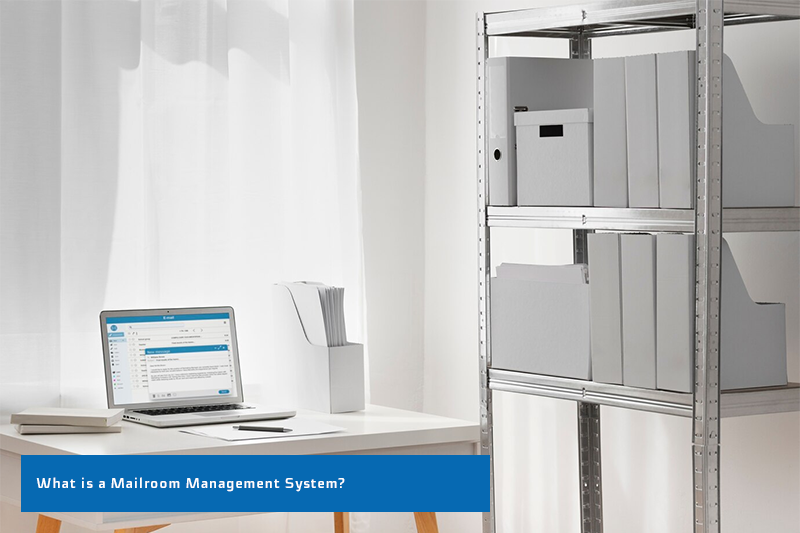What is a Mailroom Management System?
A Mailroom Management System is a comprehensive solution designed to streamline and automate the handling, sorting, tracking, and distribution of mail and packages within an organization. Traditionally, mailrooms relied heavily on manual processes, where staff would sort and distribute incoming and outgoing mail by hand. However, the advent of digital technology has revolutionized these operations, leading to the development of sophisticated mailroom management systems.

Info
Understanding Mailroom Management Systems
Before the advent of digital and automated solutions, traditional mailroom operations were labor-intensive and often prone to inefficiencies and errors. In a typical mailroom, staff manually sorted and delivered incoming and outgoing mail. The process involved several steps:
- Manual Sorting: Staff would receive large volumes of mail and physically sort them based on recipients or departments.
- Delivery Routes: Sorted mail would then be placed on carts or in mailbags and delivered along predetermined routes within the organization.
- Record Keeping: Logbooks or paper-based systems tracked the receipt and delivery of important documents and packages, which was time-consuming and prone to mistakes.
- Security Concerns: Handling sensitive documents manually increased the risk of loss, theft, or unauthorized access, posing significant security challenges.
Despite the hard work and dedication of mailroom staff, the traditional system often struggled with delays, misplaced items, and a lack of transparency, leading to inefficiencies in business operations.
Why traditional mailroom management needs a refresh
The transition from traditional mailroom operations to digital and automated systems marked a significant leap in efficiency and effectiveness. This evolution began with the integration of simple digital tools and has advanced to sophisticated, fully automated mailroom management systems. Key milestones in this evolution include:
- Introduction of Digital Sorting Tools: Early digital tools, such as barcode scanners and computerized sorting systems, started to replace manual sorting, reducing errors and speeding up the process.
- Development of Tracking Systems: The ability to track packages in real-time using digital systems provided greater transparency and accountability, addressing a major pain point of traditional mailrooms.
- Automation and Robotics: Advanced automation technologies, including robotic sorting machines and conveyors, further streamlined mail handling processes, minimizing human intervention and maximizing efficiency.
- Software Integration: Comprehensive software platforms emerged, offering a suite of tools for managing every aspect of mailroom operations, from sorting and tracking to reporting and security.
- Digital Mail Services: Converting physical mail to digital formats allowed for seamless integration with email and other digital communication platforms, enhancing accessibility and storage capabilities.
Benefits of Implementing a Mailroom Management System
Implementing a Mailroom Management System offers a multitude of benefits that can transform how businesses handle their mail and packages. From enhancing efficiency to improving security, these systems provide significant advantages that help organizations streamline operations and reduce costs. Here are some of the key benefits:
Increased Efficiency
One of the primary benefits of an MMS is the significant time savings it offers. Automated sorting and distribution processes reduce the need for manual labor, allowing mail to be processed quickly and accurately. This efficiency extends to delivery as well, with automated systems ensuring that mail reaches its destination promptly.
- Faster Sorting: Automated sorting machines and digital tools can process large volumes of mail in a fraction of the time it takes for manual sorting.
- Quick Retrieval: Real-time tracking systems allow recipients to quickly locate and retrieve their packages, reducing delays and downtime.
Reduction in Errors
Human error is a common issue in traditional mailrooms, leading to misplaced or lost items. An MMS minimizes these errors through automation and precise tracking mechanisms, ensuring that each piece of mail is accurately sorted and delivered.
- Accurate Sorting: Advanced algorithms and barcode scanning ensure that mail is correctly sorted, reducing the chances of misdelivery.
- Reliable Tracking: End-to-end tracking provides visibility into the status and location of each item, making it easy to trace any misplaced mail.
Future Trends in Mailroom Management
The landscape of mailroom management is continually evolving, driven by advancements in technology and changing business needs. As organizations seek to improve efficiency, security, and sustainability, several emerging trends are shaping the future of mailroom management. Here are the key trends to watch:
Increasing Automation and AI
Predictive analytics leverages data to forecast future mailroom needs and trends. By analyzing historical data and identifying patterns, mailroom management systems can optimize operations and anticipate issues before they arise.
- Proactive Management: Predictive analytics can predict peak times for mail and package volumes, allowing mailrooms to allocate resources efficiently and avoid bottlenecks.
- Enhanced Decision-Making: Data-driven insights help managers make informed decisions about staffing, equipment, and process improvements.
Enhanced Data Analytics
Advanced data analytics tools are providing deeper insights into mailroom operations, enabling continuous improvement and better decision-making.
Advanced Reporting Capabilities
Modern mailroom management systems offer sophisticated reporting tools that analyze various aspects of mailroom performance.
- Operational Insights: Detailed reports on mail volumes, processing times, and delivery performance help identify areas for improvement.
- Trend Analysis: Analyzing trends over time can reveal patterns and inform strategic decisions about resource allocation and process optimization.